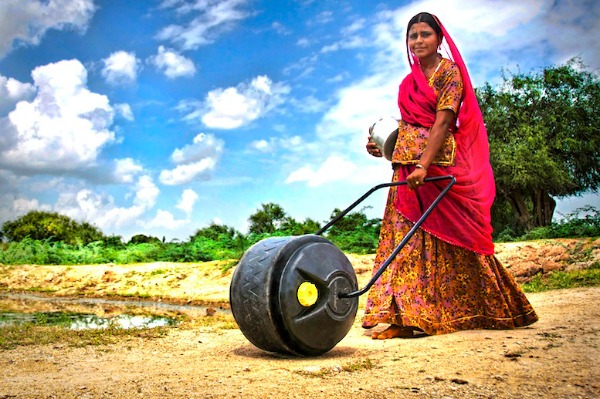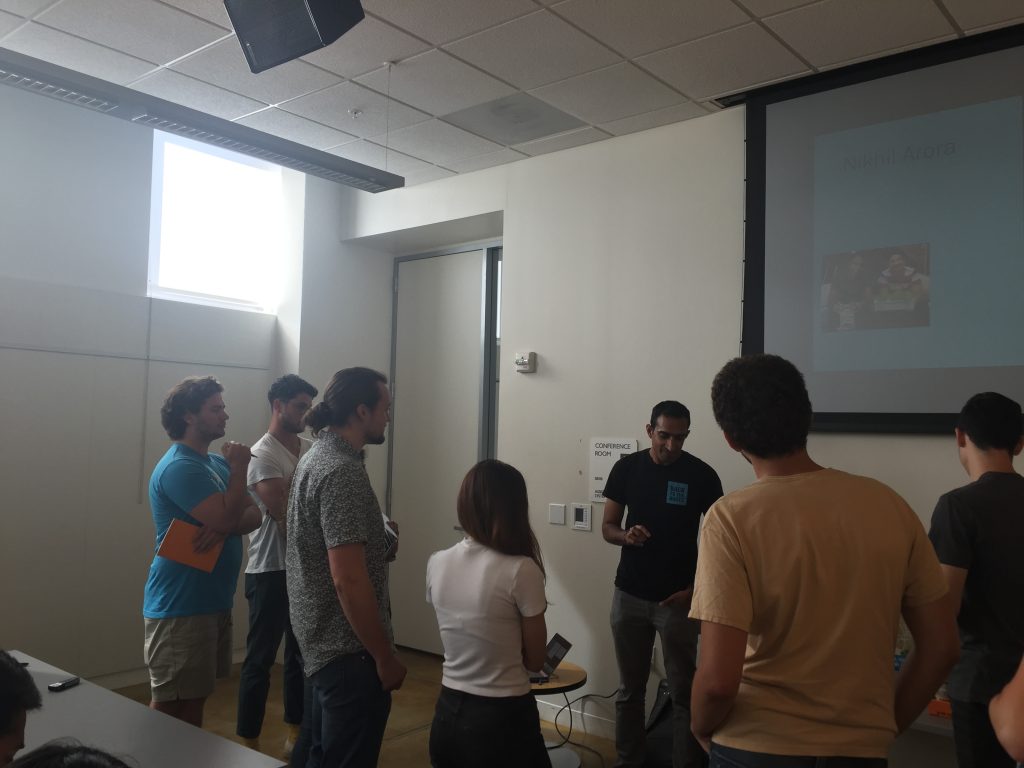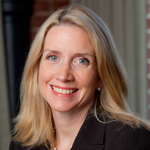
The lean startup methodology, created by Steve Blank, Eric Reis and Osterwalder/Pigneur is becoming a pervasive part of entrepreneurial communities: it’s being used by small startups and large corporations alike; it’s being applied in industries from healthcare to defense; it’s being used by the National Science Foundation to help federally funded university research get to market through the NSF I-Corps program. But lean startup hasn’t been applied extensively to social innovation for developing economies. Why not?
Jennifer Walske and Sophi Martin of UC Berkeley are researching the topic. Through a combination of coursework and USAID-based funding, UC Berkeley’s Blum Center for Developing Economies implemented the lean methodology across its interdisciplinary course curriculum for both developed and developing economies. Their work now is analyzing what the effect has been, and seeking answers to such questions as whether students who learn lean launch are better at understanding the implications of their social innovations, from both the business model and technical perspectives, and where there might be risks to using the lean approach in a developing country context.

Walske and Martin looked at two courses in particular: the Social Innovator OnRamp application-based course, and a graduate-level Development Engineering minor course titled Design, Evaluate, and Scale Development Technologies. In both classes, the business model canvas (BMC) was a tool used for customer development, including customer segmentation, and minimal viable product determination. Students further delved into parts of the BMC including the identification of key resources, activities, and partnerships. The BMC process required extensive interviews with potential beneficiaries, like companies, and potential partners, as well as with those knowledgeable about other aspects of the canvas relevant to their social innovation.
From the outset Walske and Martin were unsure how useful the BMC would be in a developing country context due to one major concern: the relative difficulty of conducting customer/beneficiary interviews with people located in distant geographies. How do you, a student in California, conduct 50 customer interviews with, say, off-the-grid villagers in rural India? They found that, although it was initially challenging for students to reach the right customers, the process did hold merit. The key to success with this method was recruiting “on the ground” friends or family to conduct surveys locally, and using other survey techniques to reach target populations.
Another key insight was the importance of early partner identification. Local partners in developing economies can often serve as interpreters, cultural guides, and importantly, sources of credibility within otherwise distrusting communities. Walske and Martin found that their students wanted to identify partners quickly, often before fully understanding the problem they were trying to solve. In fact, partners were important in building students’ knowledge around the true nature and scope of the targeted social problem, as well as providing insight into feasibility of certain solutions in the local context.
Overall, Walske and Martin found that applying lean startup to social benefit work in developing country settings was most worthwhile to students focused on creating their own ideas. However, there are some lessons from design thinking that could really advance the applicability of lean launch to development. One major element they suggest borrowing from design thinking is observation. Simply observing people going about their daily lives can uncover needs that people won’t or can’t tell you they have. The other major benefit of observation is the inherent humility and empathy it inspires; people are innovative, and when faced with challenges a lot of people come up with creative ways to solve them within their own political and social contexts. Observation reveals the subtleties of society that a polite home-dweller might not tell you about in your lean startup-inspired sit-down interview, much less so in an online survey platform. Further, using technology such as sensors to collect usage data can be useful, as it removes the “Hawthorne effect” of someone using a product/service simply because the provider is in the room.
About the authors
 Dr. Jennifer Walske is a visiting fellow at the Blum Center, a social impact fellow at Berkeley-Haas, and an assistant professor at University of San Francisco (USF). As a writer, researcher and investor, Dr. Walske sits on numerous for profit and non-profit boards, including Net Impact, Better Ventures, House of RS, and the San Francisco Ballet. Dr. Walske has received an outstanding research award and faculty academic excellence at USF. In 2011 she received a “best paper” award from NYU Stern’s Social Entrepreneurship Conference. At Berkeley-Haas, she received the Cheit Award for Teaching Excellence. Prior to her academic career, Dr. Walske was an institutional All American ranked investment banking securities and a regular commentator on both CNN and CAD/CAM at Synopsys and Intergraph. Dr. Walske holds a doctorate in strategy and entrepreneurship from Boston University, an MBA from Santa Clara University and a bachelor’s degree from UC Santa Barbara.
Dr. Jennifer Walske is a visiting fellow at the Blum Center, a social impact fellow at Berkeley-Haas, and an assistant professor at University of San Francisco (USF). As a writer, researcher and investor, Dr. Walske sits on numerous for profit and non-profit boards, including Net Impact, Better Ventures, House of RS, and the San Francisco Ballet. Dr. Walske has received an outstanding research award and faculty academic excellence at USF. In 2011 she received a “best paper” award from NYU Stern’s Social Entrepreneurship Conference. At Berkeley-Haas, she received the Cheit Award for Teaching Excellence. Prior to her academic career, Dr. Walske was an institutional All American ranked investment banking securities and a regular commentator on both CNN and CAD/CAM at Synopsys and Intergraph. Dr. Walske holds a doctorate in strategy and entrepreneurship from Boston University, an MBA from Santa Clara University and a bachelor’s degree from UC Santa Barbara.
 Dr. Sophi Martin develops and executes scaling strategies for technologies coming out of the Blum Center ecosystem, working with faculty and students to grow their impact. She also supports social innovators across the campus and Blum Center network in the Big Ideas contest and Social Innovator OnRamp curriculum. She contributes to the strategy and implementation of Blum Center growth, DIL, and the Development Engineering Designated Emphasis. From 2010 to 2014, Sophi worked for the College of Engineering at the University of Illinois at Urbana-Champaign in corporate relations and research administration. Sophi holds a Ph.D. in Materials Science and Engineering and a B.S. in Engineering Physics, both from UC Berkeley, and brings her passion for engineering to her role in transitioning science from the lab bench to making real impact on the world around us.
Dr. Sophi Martin develops and executes scaling strategies for technologies coming out of the Blum Center ecosystem, working with faculty and students to grow their impact. She also supports social innovators across the campus and Blum Center network in the Big Ideas contest and Social Innovator OnRamp curriculum. She contributes to the strategy and implementation of Blum Center growth, DIL, and the Development Engineering Designated Emphasis. From 2010 to 2014, Sophi worked for the College of Engineering at the University of Illinois at Urbana-Champaign in corporate relations and research administration. Sophi holds a Ph.D. in Materials Science and Engineering and a B.S. in Engineering Physics, both from UC Berkeley, and brings her passion for engineering to her role in transitioning science from the lab bench to making real impact on the world around us.
 Tim Binkert leads storytelling activity at VentureWell, managing the blog, the website and its content, and social media. Tim brings years of experience at VentureWell to bear in relating the stories of faculty and early stage innovators who have moved their ideas to impact through VentureWell’s programs. Tim holds a BA from Syracuse University and a Certificate in Professional Writing and Technical Communication from University of Massachusetts Amherst.
Tim Binkert leads storytelling activity at VentureWell, managing the blog, the website and its content, and social media. Tim brings years of experience at VentureWell to bear in relating the stories of faculty and early stage innovators who have moved their ideas to impact through VentureWell’s programs. Tim holds a BA from Syracuse University and a Certificate in Professional Writing and Technical Communication from University of Massachusetts Amherst.